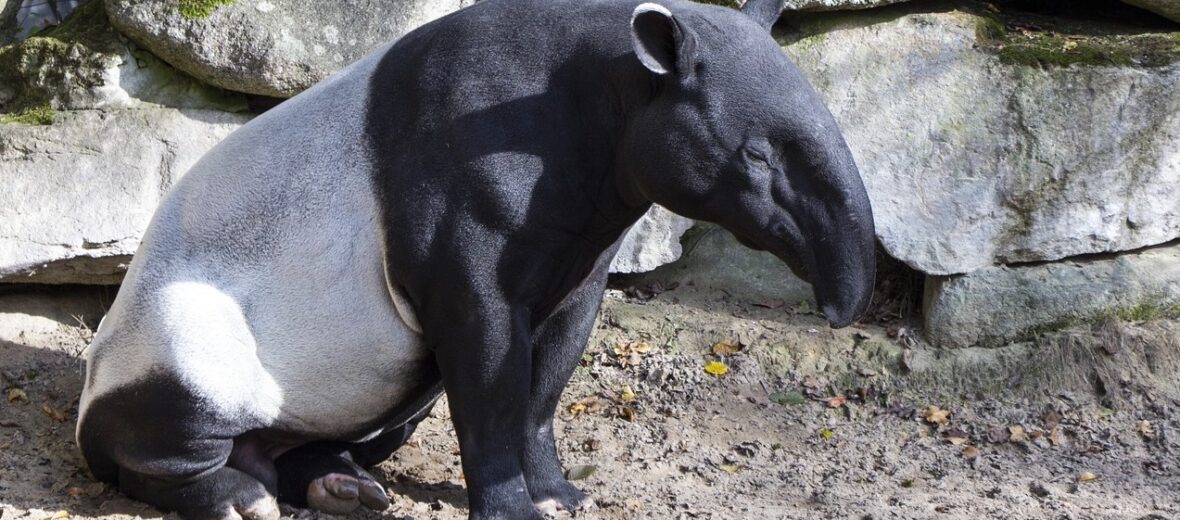
Welcome the Malayan tapir, aka the Asian tapir or Malay tapir. These are the only surviving species of Old World tapirs. They can be found, although severely fragmented, from south-eastern Asia, to southern Myanmar on down to south-western Thailand, Malaysia, and the Malay Peninsula on over to Sumatra. These tapirs tolerate a wide range of environments; including: montane cloud forests, hill forests, alpine scrubland, and grassy clearings. Just as long as their is ample access to water. With an estimated less than 2,500 wild individuals remaining, the Malay tapir is listed as Endangered by the IUCN. Their populations are also decreasing. This is due to habitat destruction, civil unrest, military exercises, hunting, and trapping.
First the Stats…
Scientific name: Acrocodia indica
Weight: Up to 550 lbs.
Length: Up to 8.2 feet
Height: Up to 3.5 feet
Lifespan: Up to 30 years
Now on to the Facts!
1.) While mostly nocturnal (active at night), these creatures can also exhibit crepuscular (active at dawn and dusk) behaviors as well.
2.) They prefer a solitary lifestyle. Only coming together to mate. However, they will gather in small groups if food becomes scarce.
3.) Malayan tapirs are agile climbers and great swimmers.
4.) These tapirs can hold their breath, underwater, for up to 90 seconds.
5.) A group of tapirs is called a herd or a candle.
But wait, there’s more on the Malayan tapir!
6.) They use sounds, in part, to communicate. The sounds they make are clicks, whistles, and hiccup-like calls.
7.) Their diet is a combination of folivorous (leaf-based), frugivorous (fruit-based), and lignivorous (wood-based). They feast on leaves, buds, new-growth twigs, tree bark, shrubs, herbs, low growing succulents, various fruits, moss, grasses, tubers, and aquatic plants.
Did you know…?
They may look bulky, but these amazing critters can run up to 30 mph!
8.) These tapirs are seasonally monogamous (mate with only 1 partner during each mating season).
9.) Females birth a single calf every 2 years, after undergoing up to an arduous 13.5 month gestation (pregnancy).
10.) Newborns are predominantly precocial (mostly self-sufficient at birth). They are able to stand just 1 – 2 hours after birth.
But wait, there’s still more on the Malayan tapir!
11.) Tapirs are most closely related to horses and rhinoceroses.
12.) Like a hippopotamus, these critters can walk underwater.
Did you know…?
Thailand tapirs are called “P’som-sett”. This translates to “mixture is finished”. The reference stems from the belief that they were made from left over parts of other critters.
13.) Sans humans, only tigers, dholes, and crocodiles prey on Malayan tapirs.
14.) They have barely changed, physically, in around 20 million years.
15.) Tapirs use their nose for aiding in stripping foliage from branches and as a snorkel for breathing, when underwater.
Now a Short Malayan Tapir Video!
Be sure to share & comment below! Also, check out the Critter Science YouTube channel. Videos added frequently!
Want to suggest a critter for me to write about? Let me know here.



